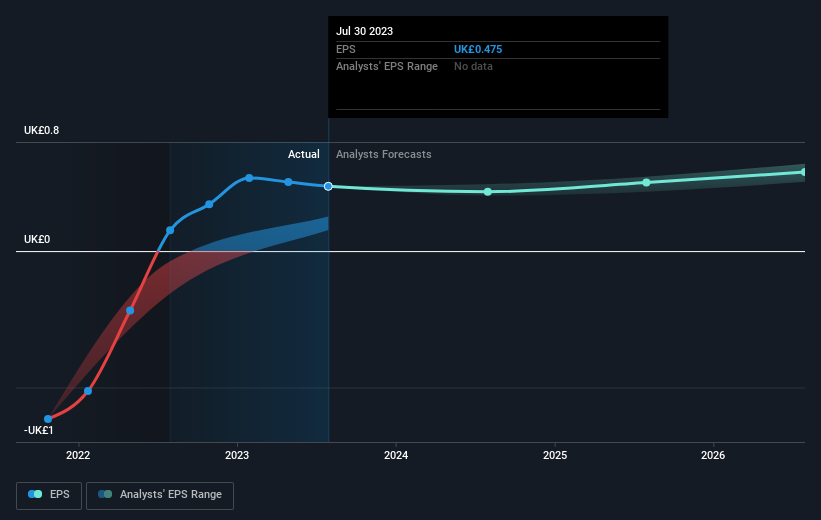Investors in J D Wetherspoon (LON:JDW) have seen notable returns of 69% over the past year
Passive investing in index funds can generate returns that roughly match the overall market. But you can significantly boost your returns by picking above-average stocks. For example, the J D Wetherspoon plc (LON:JDW) share price is up 69% in the last 1 year, clearly besting the market decline of around 3.8% (not including dividends). So that should have shareholders smiling. In contrast, the longer term returns are negative, since the share price is 28% lower than it was three years ago.
Let's take a look at the underlying fundamentals over the longer term, and see if they've been consistent with shareholders returns.
See our latest analysis for J D Wetherspoon
To quote Buffett, 'Ships will sail around the world but the Flat Earth Society will flourish. There will continue to be wide discrepancies between price and value in the marketplace...' One imperfect but simple way to consider how the market perception of a company has shifted is to compare the change in the earnings per share (EPS) with the share price movement.
J D Wetherspoon was able to grow EPS by 226% in the last twelve months. It's fair to say that the share price gain of 69% did not keep pace with the EPS growth. Therefore, it seems the market isn't as excited about J D Wetherspoon as it was before. This could be an opportunity.
The image below shows how EPS has tracked over time (if you click on the image you can see greater detail).

We consider it positive that insiders have made significant purchases in the last year. Even so, future earnings will be far more important to whether current shareholders make money. Dive deeper into the earnings by checking this interactive graph of J D Wetherspoon's earnings, revenue and cash flow.
A Different Perspective
We're pleased to report that J D Wetherspoon shareholders have received a total shareholder return of 69% over one year. That certainly beats the loss of about 6% per year over the last half decade. This makes us a little wary, but the business might have turned around its fortunes. It's always interesting to track share price performance over the longer term. But to understand J D Wetherspoon better, we need to consider many other factors. Case in point: We've spotted 2 warning signs for J D Wetherspoon you should be aware of, and 1 of them shouldn't be ignored.
If you like to buy stocks alongside management, then you might just love this free list of companies. (Hint: insiders have been buying them).
Please note, the market returns quoted in this article reflect the market weighted average returns of stocks that currently trade on British exchanges.
Have feedback on this article? Concerned about the content? Get in touch with us directly. Alternatively, email editorial-team (at) simplywallst.com.
This article by Simply Wall St is general in nature. We provide commentary based on historical data and analyst forecasts only using an unbiased methodology and our articles are not intended to be financial advice. It does not constitute a recommendation to buy or sell any stock, and does not take account of your objectives, or your financial situation. We aim to bring you long-term focused analysis driven by fundamental data. Note that our analysis may not factor in the latest price-sensitive company announcements or qualitative material. Simply Wall St has no position in any stocks mentioned.
